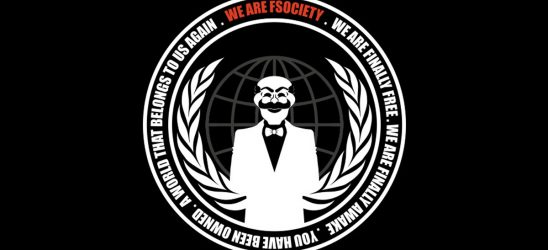
Someone has used the plot and visuals of the Mr. Robot show to create FSociety ransomware.
The post FSociety wants a piece of the ransomware cake appeared first on Avira Blog.

Someone has used the plot and visuals of the Mr. Robot show to create FSociety ransomware.
The post FSociety wants a piece of the ransomware cake appeared first on Avira Blog.

A Russian cyber-crime group seems to have hacked their way into the computer systems at Oracle.
The post Payment card (in)security and you appeared first on Avira Blog.
Whether you’re a Star Wars character or a real-life hacker, beware of the dark side.
The post Star Wars, hackers, and the call of the dark side appeared first on Avira Blog.
A “white hat” is how we described the hacker who added Avira installers to the Dridex botnet distribution network. Our description might have been a bit off-color.
The post 50 Shades of Dridex Botnet Grey appeared first on Avira Blog.
A distribution channel of the Dridex botnet may have been hacked. Instead of getting loaded with malware, people are getting clean copies of Avira antivirus and we have two theories as to why. Do you know what a “white hat” is?
The post Dridex botnet distributor now serves Avira appeared first on Avira Blog.
There are as many hackers as there is sand on a beach – so to get noticed you need to do something a bit out of the ordinary. If you’re not into hacking a big name like … say Sony, that probably means doing what a hacker called “Amped Attacks” has been up to lately: Taking down racist and homophobic sites (for a short time). One by one.
The post Hacker ‘Amped Attacks’ Takes Down Hateful Webpages appeared first on Avira Blog.
Brennans question what he wants was answered with a demand of a mere 2 trillion dollars – or “Palestine to be free and for you to stop killing innocent people”.
The post Teenager claims he hacked CIA Director’s mail appeared first on Avira Blog.
A hacker who used the notorious Blackshades RAT malware to hijack webcams on computers, and secretly watch people engaged in sexual activity, has received a suspended prison sentence.
The post Webcam hacker spent up to 12 hours a day watching his victims appeared first on We Live Security.
![]()
It’s most likely not a huge surprise that there is such a list, and while it’s probably not as well-known as its “big brother”, the rewards offered for information leading to the arrest and/or conviction of 5 of the top most wanted cybercriminals on that list is not too shabby: The Federal Bureau of Investigation is willing to pay a total reward of $4.2 million!
So who is actually on the list? Let’s take a look.
EVGENIY MIKHAILOVICH BOGACHEV
Evgeniy Mikhailovich Bogachev, aka “lucky12345” and “slavik”, became famous as being the alleged mastermind behind the Trojan called “Zeus”. The Russian currently fetches a reward of $3 million.
NICOLAE POPESCU
The Romanian Nicolae Popescu apparently was involved in Internet Fraud schemes and made quite a lot of money with it. The FBI is offering a reward of $1 Million for him.
ALEXSEY BELAN
Belan is only worth $100,000 to the authorities. The Russian is wanted for allegedly having broken into three major United States-based e-commerce companies. Afterwards he tried to sell the stolen usernames and passwords on the black market.
PETERIS SAHUROVS
Being accused of selling malware laced ads that distributed ransomware, the reward for the Latvian is currently at $50,000.
CARLOS ENRIQUE PEREZ-MELARA
While the reward for Melara is set at $50,000, my guess is that the FBI actually wants to hire the guy: He allegedly was involved in manufacturing spyware “which was used to intercept the private communications of hundreds, if not thousands, of victims”.
For the rest of the list just go here.
The post Get a total of $4,2 million for the FBI’s most wanted hackers appeared first on Avira Blog.
The second admission followed a week later. The Office of Personel Management (OPM) announced that on June 4, a hack attack had succeeded on governmental staff – four million people affected. It now appears that an additional 18 million records were stolen. The government, communicated this as two separate events in an apparent attempt to downplay the scale.
So what happened in the alleged second hack? That 18 million Social Security numbers have been compromised, is a “preliminary, unverified, approximate” according to a letter from the Director of OPM, Katherine Archuleta. The number — 18 million – affects people working for a federal agency or who applied for funding. The data, according to US government circles, may be in the hands of spies from the People’s Republic of China. This has been flatly denied by Chinese officials.
Mrs. Archuleta was called to testify before a Congressional committee: Encryptions are not always possible due to the age of facilities. She argued, however, that even encryption would have not sufficed, because the hackers would then have copied keys and passwords.
An article from the Wall Street Journal mentions that the government described the attack as happening in two waves in orde rto downlplay the severity. In addition, the OPM had denied the disclosure of sensitive information twice, even though the FBI had informed the OPM on June 5 about the attack…
The post Office of Personal Management Hacked – US Government Downplays the Event appeared first on Avira Blog.